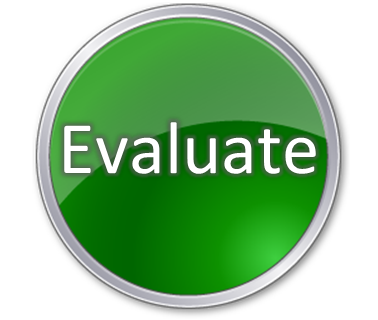
Instructions - Part 13

Evaluate Your Solutions
In the last two sections, you've analyzed your objective data and subjective thoughts regarding your solutions. If you haven't found a superior solution yet, you should probably analyze the solutions that you do have for potential problems. You may also want to use our analytical evaluation techniques.
Potential Problems
Step 1: Use Time Framed Consequences to observe the consequences of your solutions from different time frames.
Step 2: Generate potential failures with Negative Brainstorming.
Step 3: Analyze your solutions using Potential Problem Analysis.
Step 4: Look for contradictions inherent in your solutions using Contradiction Analysis.
Step 5: Assume that future outcomes have already happened and identify their impacts with What If? Analysis.
Step 6: Assume an unlikely outcome has happened and determine its impacts with High Impact / Low Probability Analysis.
Step 7: Use Pre-Mortem Analysis to assess how your plan could go spectacularly wrong.
Step 8: Play the Devil's Advocate by presenting the best possible case against a proposed plan.
Analytical Evaluations
Step 9: Evaluate the good, bad, and interesting points of your solutions with the Pros, Cons, and Interesting tool.
Step 10: Rank your alternatives by comparing them in paired sets using Paired Comparison Analysis.
Step 11: Use Grid Analysis to rank your alternatives.
Step 12: Create a matrix for testing your hypotheses using the Hypothesis Testing Matrix tool.
Step 13: Use the Analysis of Competing Hypotheses (ACH) computer program to analyze multiple hypothesis.
Stakeholder Analysis
Step 14: Examine the stakeholders involvement using Stakeholder Analysis.
Step 15: Use a Commitment Chart to determine the minimum stakeholder commitment required to succeed.
Decision-Making Methods
Step 16: Easy Way Out: Choose the easiest way out, then justify it.
Step 17: Spell Out the Reasons: Choose each alternative, then justify it.
Step 18: Give Up What?: Choose each alternative, then knock it.
Step 19: Ideal Solution: Rank alternatives by their nearness to the ideal solution.
Step 20: Best Home: Examine the best home for each alternative.
Step 21: When Does It Become Unattractive: Find out when each alternative becomes unattractive.
Step 22: Well-Being of the Whole: Rank alternative by their contribution to the well-being of the whole.
Step 23: Fear, Greed, and Laziness: Examine the influences of fear, greed, and laziness on each of your alternatives.
Step 24: Stand Pat: Consider doing nothing.
Step 25: Defer Decision: Examine the reasons for deferring your decision.
Step 26: Final Decision: Make your final choice.
Go to the next step, click A Few Words on Implementation.

Click to return to Instructions Main Menu.
